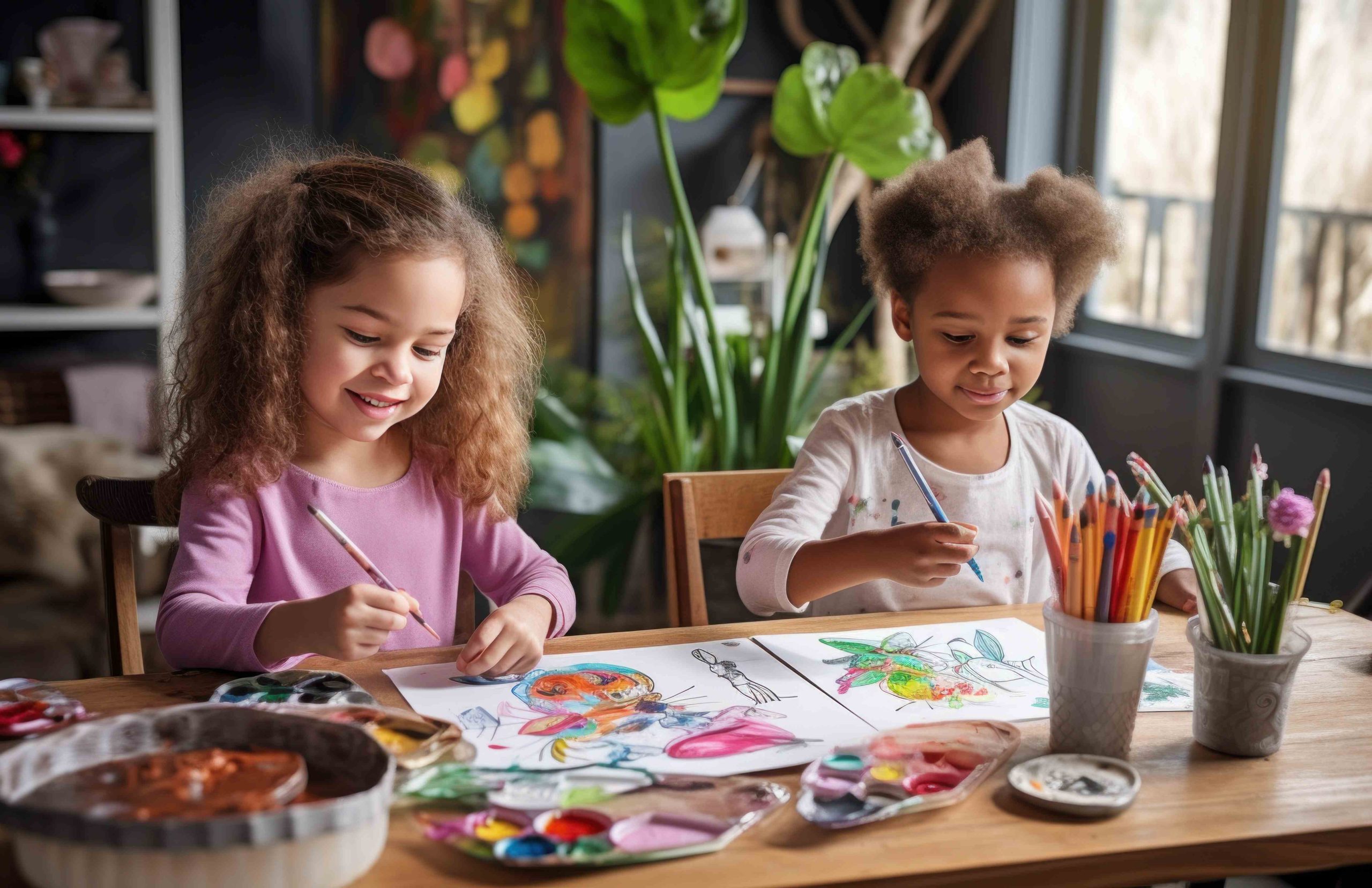
Artistic Expression: Activities for Preschoolers to Unleash Their Creativity
Drawing and Painting
Drawing and painting activities are excellent for preschoolers because they are straightforward and only need simple supplies like crayons, markers, pencils, and paper. These activities improve fine motor abilities, hand-eye coordination, and attention to detail.
To make them more engaging, encourage preschoolers to draw or paint their favorite objects, animals, or abstract shapes. Provide different materials such as watercolors, pastels, or chalk for experimentation.
Collage Making
Collage making allows preschoolers to use their imagination and creativity. They can use materials like magazine cutouts, tissue paper, and fabric to create unique collages, improving fine motor skills and spatial awareness.
To make collage making fun, give preschoolers a theme or ask them to create a specific image. Encourage the use of different textures and colors.
Sculpture Making
Sculpture making with clay, playdough, or paper mache is fantastic for experimenting with various mediums. It develops fine motor skills and spatial awareness as preschoolers mold and shape materials.
Make sculpture making engaging by giving preschoolers a theme or providing materials like feathers and beads for decoration.
Printing
Printing involves pressing objects against a surface to create images or patterns. It helps develop fine motor skills and hand-eye coordination as preschoolers press objects onto surfaces.
Make printing fun with different paints like tempera or finger paint, and encourage experimentation with objects and colors.
Drama and Role Play
Drama and role play activities allow preschoolers to use their imagination to create characters and scenarios. They develop social and emotional skills by communicating and collaborating with others.
Enhance drama and role play with costumes, props, and storytelling or re-enacting favorite stories.
Music and Dance
Music and dance activities let preschoolers express themselves through movement and rhythm, improving coordination and motor skills.
Make music and dance enjoyable by playing different music styles and encouraging experimentation with movements and gestures.
Conclusion
Artistic expression activities are crucial for preschoolers’ development, fostering creativity, cognitive, social, and emotional skills. By providing a variety of engaging activities, caregivers can nurture a love for creativity and set preschoolers on a path of self-expression and personal growth.


